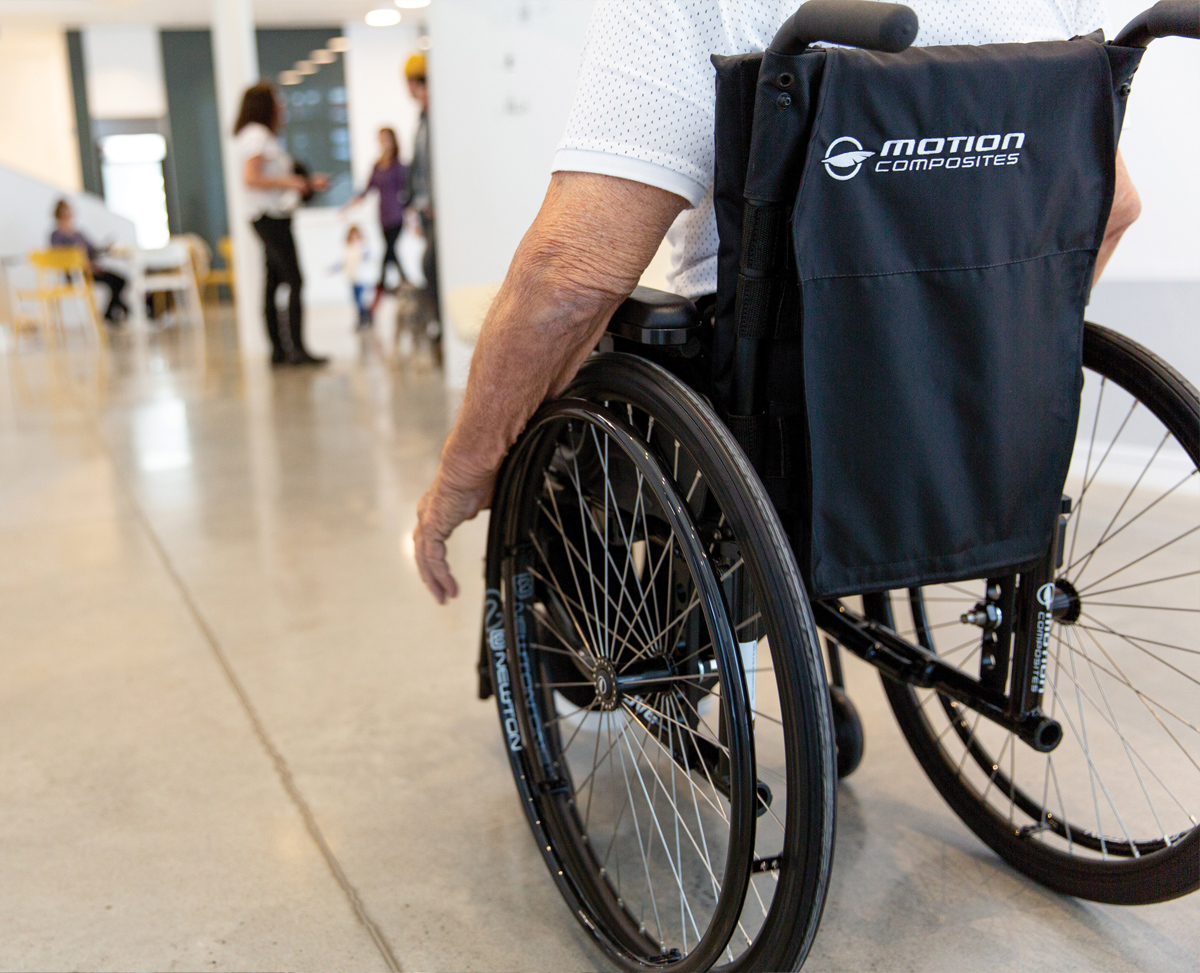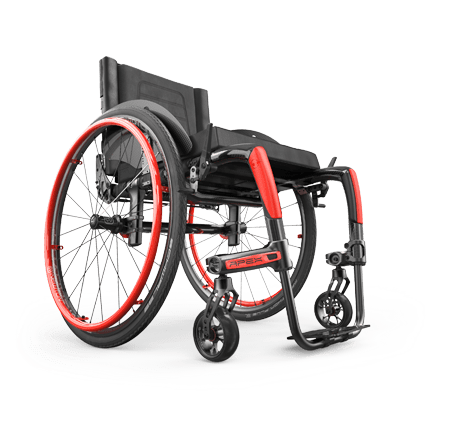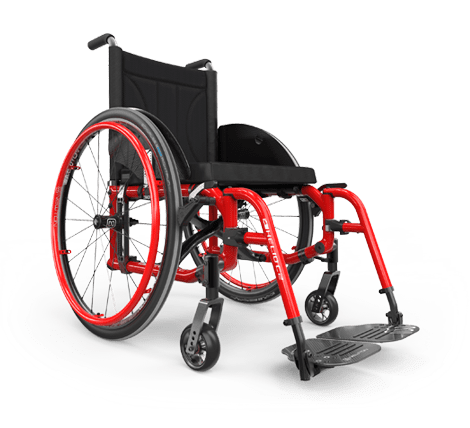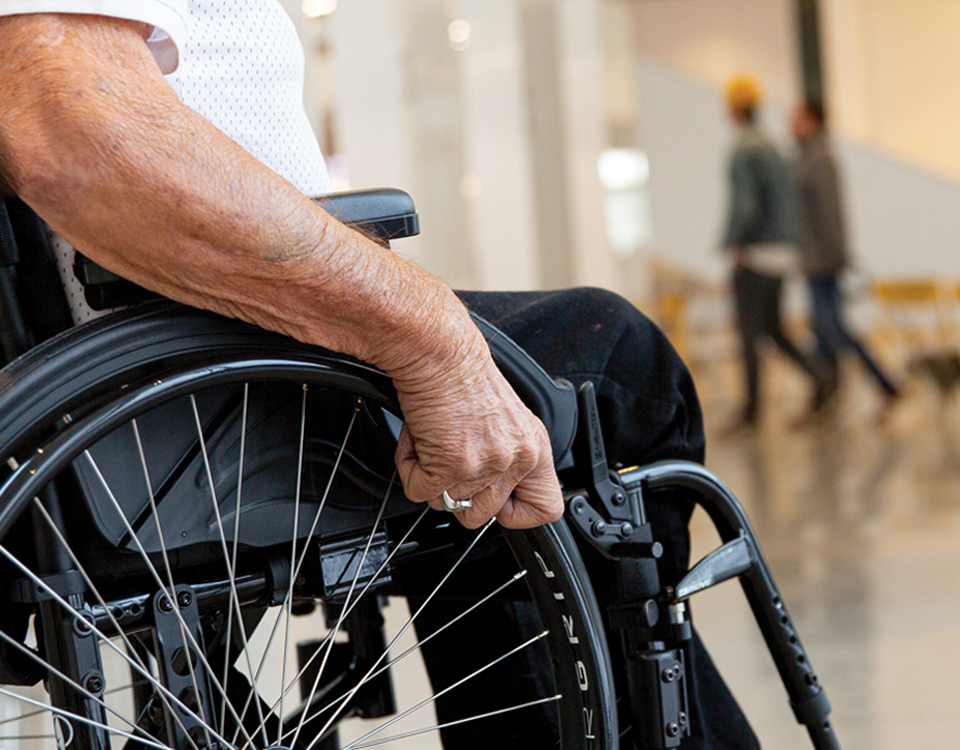Trends within our industry have led to the idea that ultralightweight wheelchairs are reserved for what is categorized as young and active users. Although funding for custom equipment for the geriatric population varies greatly geographically, high-end manual equipment tends to reserve these devices for those who can be deemed independent and highly active within the home and community. However, recommendations for evaluation and funding for custom manual wheelchairs are easily justified for the geriatric population when normal aging progression and specific wheelchair features are understood. Especially when the prescription of a customized manual wheelchair can be the solution which allows the client to be deemed highly active and independent. We will review these aspects here.
Changes with Age: Strength, ROM, & Posture
Due to a natural loss of muscle mass known as sarcopenia, muscle strength decreases with advancing age. This decrease in strength is usually greater in the lower extremities than in the upper extremities and is a primary cause of loss of independence and falls in the geriatric population. Shoulder muscle volume was found to be significantly reduced in older adults compared to younger adults. Because manual wheelchair users rely on shoulder muscles for propulsion, age-related changes in shoulder muscle volume can be detrimental to continued propulsion and independence. Shoulder pain and dysfunction also increase when starting manual wheelchair use after skeletal maturity. Because of this, combined with the aging process, the use of a manual wheelchair may cause shoulder pain earlier than with a younger client. Prevention through prescription is one way to ensure independence can remain and pain can be reduced.
Spinal changes can also occur with aging and can impact posture and range of motion. One example of this is thoracic kyphosis, often causing forward head posture. These conditions together are known to increase the chances of aspiration, which could lead to further medical issues, including pneumonia and ultimately death. The elderly disabled population with a combination of kyphosis and forward head posture have lower physical function and independence with mobility. Recommendations to counteract these postural changes include an inclined back, solid, or otherwise, and a pelvic belt to prevent sliding. Decreased fluid levels in intervertebral discs, especially lumbar and thoracic areas, are associated with aging and cause decreased flexibility.
There is no doubt the aging process causes musculoskeletal and postural changes in the trunk and the upper and lower extremities which will significantly impact a client’s ability to independently propel a manual wheelchair. By understanding the individual features of the ultralightweight wheelchair category, we can properly recommend, set-up and justify the need for the best outcomes.
Recommendations & Justification
It is well understood that multiple shoulder muscles are required for manual wheelchair propulsion, making it one reason users have such a high incidence of shoulder pain and/or dysfunction. Due to the high demand on the musculature of the shoulder and the impact this has on the wheelchair user, there are clinical recommendations for proper wheelchair set up. The RESNA position paper on The Application of Ultralightweight Manual Wheelchairs discusses, “The most appropriate manual wheelchair for individuals with disabilities who will utilize the wheelchair for an extended period is a properly configured, fully customizable wheelchair of the lightest weight possible.” Manual wheelchairs often provided to geriatric clients do not meet these recommended criteria.

A fully adjustable, ultralightweight manual wheelchair is recommended and will have the ability to be customized to the needs of the individual. These individual adjustments include an adjustable axle, so the center of gravity can be moved as forward as possible without compromising safety. When a client has thoracic kyphosis with FHP and/or shoulder weakness and decreased ROM, a forward placed axle will allow them to access more of the rear wheel for a larger propulsion stroke as well as place most of the body weight over the rear wheel for more ideal weight distribution.
Other adjustments available in an ultralightweight manual wheelchair include back and seat angle adjustments, simultaneously or independently of each other, and wheel camber. A back angle adjustment, if slightly open, can allow for accommodation of trunk weakness or limitations in trunk or hip ROM, and a slightly closed angle can allow for better wheel access if necessary. Seat angles and therefore user position can be individualized, allowing specific seat to floor heights for transfers, or super low for foot propelling. Finally, camber is an option to further customize positioning of rear wheels in relation to the upper extremities in a geriatric client. Having the wheel positioned more closely to the user will allow for improved maneuverability due to improved position. All these individual adjustments allow better positioning and better access to the wheels, allowing the client to be better positioned for independence.
Another option within the category of ultralightweight wheelchairs is the availability of performance materials such as high-end aluminum, carbon fiber or titanium. Although not always considered for the geriatric population, the clinical benefits are obvious: lightweight, increased durability, reliability and even vibration damping with some. Vibration damping is known to lessen the effects of road noise coming from the environment, which can in turn decrease pain and fatigue, which based on findings of changes with age can be a present factor.
Prescription of a manual wheelchair involves finding the best piece of equipment to ensure safe and effective mobility and increased functionality. Understanding how aging physically affects the body opens the door to understanding how to specifically qualify a geriatric client for an ultralightweight manual wheelchair. Compared to a standard wheelchair, a custom manual wheelchair fit to client specifics can provide optimum outcomes and hopefully better quality and quantity of life that may not have been possible before.








